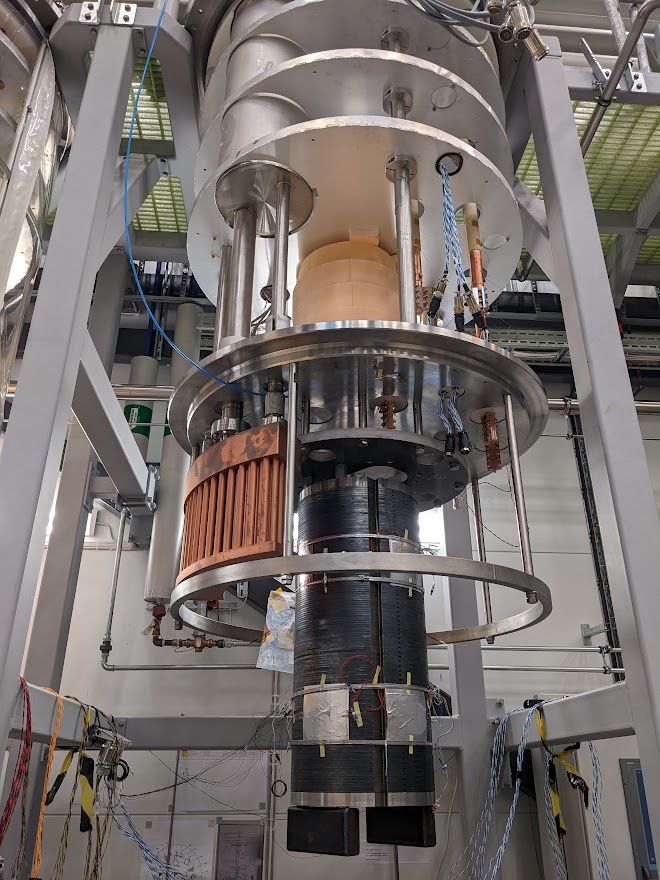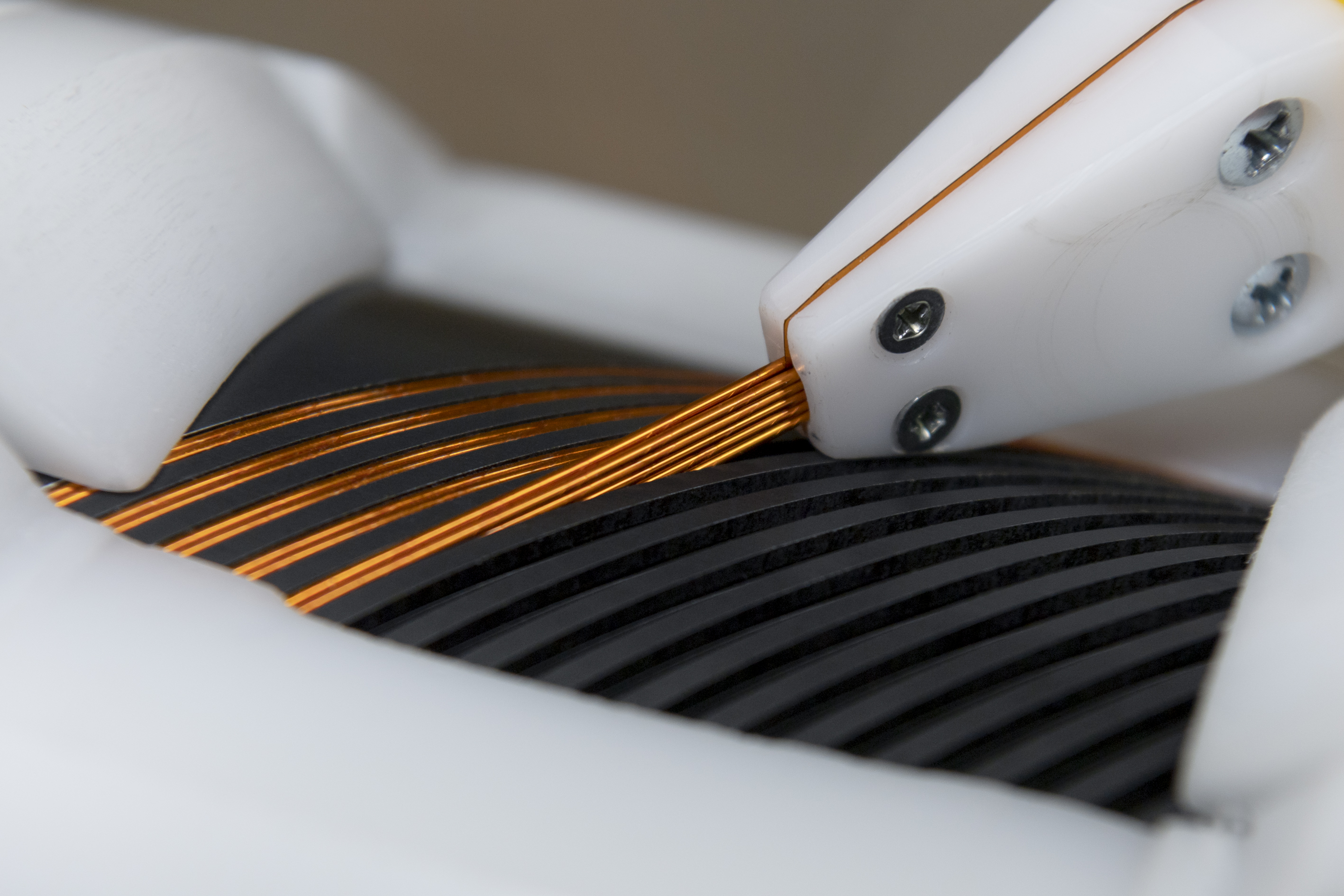The researchers of the ELKH Wigner Research Centre for Physics (Wigner RCP) have successfully completed the test of the first prototype of a superconducting particle accelerator magnet, manufactured with the involvement of mainly Hungarian companies. The testing was conducted by research group leader Dániel Barna and Kristóf Brunner, a member of the group, with the cooperation of local researchers and those working at CERN, at the FREIA laboratory of Uppsala University. The results, in addition to being an important milestone in the implementation of the CERN Future Circular Collider (FCC) project, open up new possibilities in the field of radiation therapy for cancer treatment.

The Gersemi cryostat at the FREIA laboratory of Uppsala University. Dániel Barna and Kristóf Brunner connect the high-current power cables.
The concept of the superconducting particle accelerator magnet was developed by Hungarian experts for the FCC that is the successor of the currently operational Large Hadron Collider (LHC). The device, designed for the safe extraction of particle beams from the accelerator ring, was built at the Wigner RCP laboratory in Csillebérc. The equipment was given the nickname "SuShi", which refers to one of its important components, a superconducting magnetic shielding tube (Superconducting Shield). Although the original motivation was for the FCC, the potential applications go far beyond that. The developed concept and magnet technology can be directly used in the ongoing HITRIPlus Horizon Europe project, in which the group is actively involved. The aim of this project is to design a small, compact superconducting particle accelerator for proton or carbon ion radiotherapy.

The SuShi septum magnet mounted on the internal structure of the Gersemi cryostat at Uppsala University.
The concept combines several new or rediscovered techniques. One of these is the use of wax instead of the usual epoxy resin for impregnation, which makes assembly simpler and reversible, and significantly shortens the magnet's commissioning time. The prototype was tested by research group leader Dániel Barna and Kristóf Brunner, a member of the group, at the FREIA laboratory of Uppsala University, with the cooperation of local researchers and those working at CERN. Unlike in other cases where several days or even weeks of so-called "training" are required, the prototype magnet achieved nominal maximum current on the first attempt and remained operational throughout the entire testing period. The successful tests have generated significant international interest in the field.

The winding of the SuShi superconducting magnet
The development will continue with significant Hungarian participation after the successful measurements. An important component of the device is a superconducting shielding tube, for which special composite superconducting plates are currently being developed by the staff of the Institute of Physical Metallurgy, Metalforming and Nanotechnology, Faculty of Materials and Chemical Engineering at the University of Miskolc, in collaboration with the Wigner RCP research group and CERN. A young researcher, Viktor Kárpáti, employed within the Cooperative Doctoral Program is also involved in the research and development project. The group welcomes the interest and application of creative and versatile engineers and physicists.



